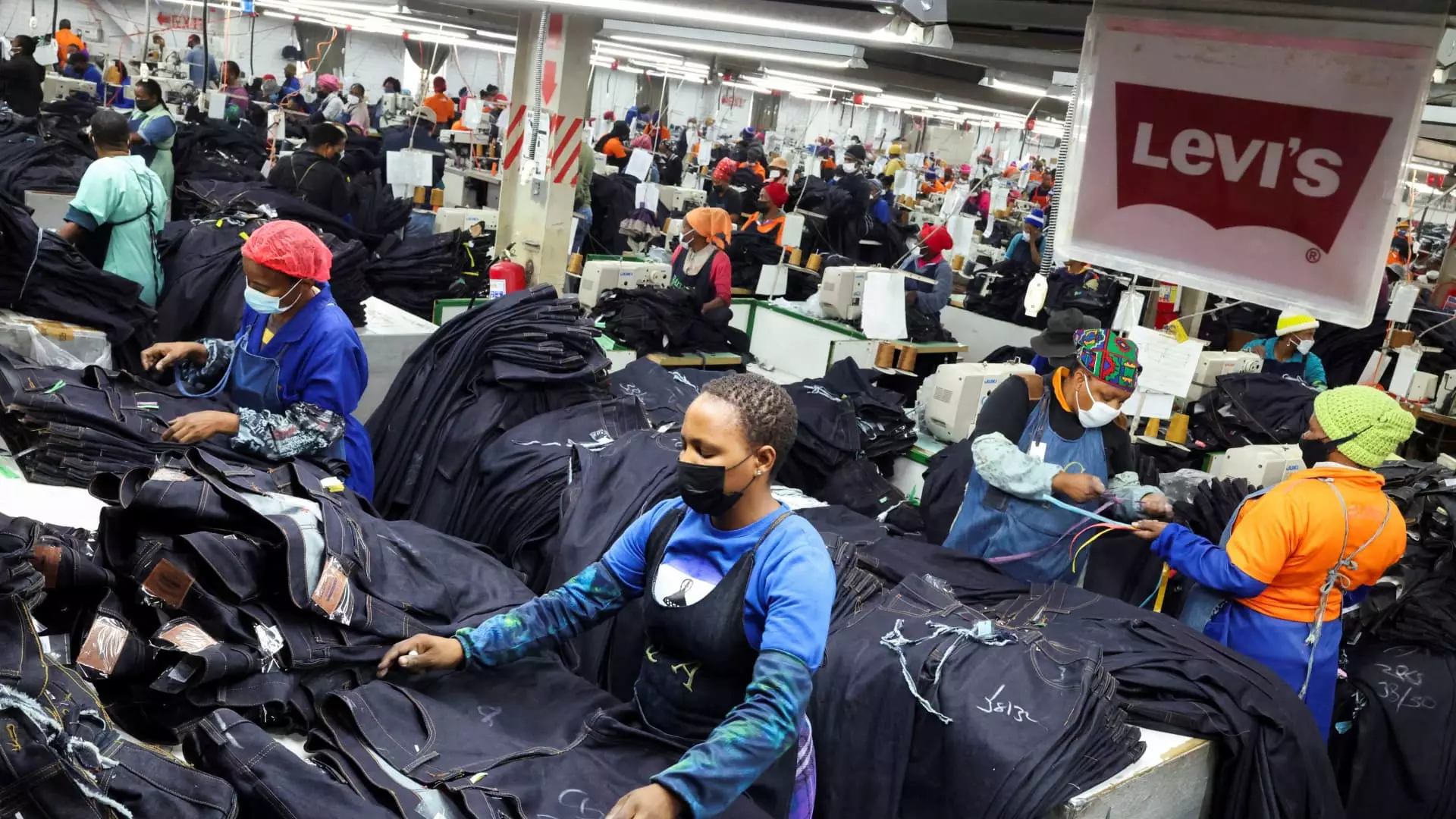Levi Strauss’s recent financial disclosures reveal a company willing to aggressively navigate the stormy seas of international trade tensions. While affirming an optimistic outlook for the full year, the denim giant openly acknowledges the risky landscape shaped by President Trump’s shifting tariffs and trade policies. This internal contradiction—facing economic headwinds while projecting confidence—exposes the fragile balance Levi’s aims to maintain. It’s a calculated gamble: absorbing some of the cost hikes to protect market share and brand strength, yet leaving open the possibility of policy shifts that could dramatically impact future margins. The contradictions inherent in this approach speak volumes about the broader economic environment—one where corporate resilience is tested, but not necessarily broken.
Levi’s isn’t just passively weathering these disruptions; it’s proactively adjusting. Its plan to raise guidance despite rising tariffs shows a leadership confident in its fundamental business model and brand appeal. But therein lies the paradox: the company’s optimism hinges heavily on assumptions that are becoming less stable by the day. It assumes tariffs remain manageable, that consumers continue to buy at full price, and that shifting global trade policies won’t drastically alter supply chains—an optimistic assumption in a climate of unpredictable policy maneuvers. This delicate reliance on current policies, juxtaposed against global trade brinkmanship, underscores an uncomfortable truth: Levi’s growth is increasingly tethered to a volatile geopolitical environment.
Trade Wars: A Double-Edged Sword for Global Supply Chains
Much of Levi’s supply chain is rooted in Southeast Asia and South Asia, regions increasingly caught under the crossfire of U.S.-China trade tensions. Despite minimal manufacturing in China, a mere 1% of Levi’s products are sourced there, the company worries about potential expansion of tariffs—particularly the recent threats directed at Bangladesh and Indonesia. These regions are crucial for Levi’s, accounting for a significant share of its lower-cost manufacturing base. The potential for steep tariffs of over 30% would devastate the company’s cost structure, forcing painful choices: either pass costs onto consumers, risking brand dilution, or absorb them and eat into margins.
This scenario highlights the perilous reliance of Western brands on complex global supply networks that are vulnerable to political whims. Levi’s cautious optimism—that tariffs will impact only a modest $25-30 million—may prove overly generous if trade disputes intensify or new restrictions emerge. Such uncertainty is a wake-up call for corporates: the notion of interconnected global trade as a stable system is increasingly illusory. Companies tout resilience and strategic adaptability, yet remain perilously exposed to the unpredictable decisions of policymakers in Washington and beyond.
Fiscal Results: A Sign of Strength Amidst Turmoil
Despite these headwinds, Levi’s recent earnings confirm its robust underlying business. Surpassing analyst expectations, the quarter showed a significant leap in both revenue and profitability. The company’s ability to outperform in a challenging environment affirms the resilience of its brand and strategic focus on direct-to-consumer sales. This shift away from wholesale channels—driven by higher margins and customer insights—reflects a broader move towards modern retailing that is less exposed to external shocks than traditional department store partnerships.
CEO Michelle Gass’s strategic reshaping of Levi’s product lineup and market approach demonstrates a savvy recognition that consumer loyalty isn’t solely built on price or product; it’s about relevance. The company’s efforts to expand beyond denim into broader apparel, particularly in women’s fashion, have begun to pay dividends, signaling a confident push to diversify revenue streams. The record gross margin of 62.6% underscores that quality, innovation, and consumer engagement can buffer against macroeconomic headwinds. Yet, these gains could be fleeting if tariffs and trade policy uncertainties intensify in the coming months.
The Cultural and Market Edge: Leveraging Brand Relevance
Levi’s understanding that cultural relevance fuels consumer loyalty is evident in its strategic partnerships, notably with Beyoncé. The exclusive capsule collection taps into the power of pop culture to keep Levi’s at the forefront of consumer consciousness. This move exemplifies how brands must evolve to remain meaningful in an era where fast fashion and fleeting trends dominate the retail landscape.
The company’s focus on appealing to a broader demographic, particularly women, underscores a recognition that legacy brands must innovate, not survive on nostalgia alone. The increased sales in women’s categories suggest that the brand’s efforts to modernize its image and product offerings resonate with contemporary shoppers. It’s a compelling illustration that relevance, combined with operational agility, can serve as a shield against external uncertainties.
Levi Strauss may be battered by the economic winds of uncertainty, but its strategic focus on brand revitalization, consumer engagement, and operational efficiency suggests it’s not only prepared to face these challenges but to emerge stronger. The company’s resilience may depend less on external conditions and more on its capacity to continually adapt, innovate, and remain culturally relevant in a rapidly changing global marketplace.

